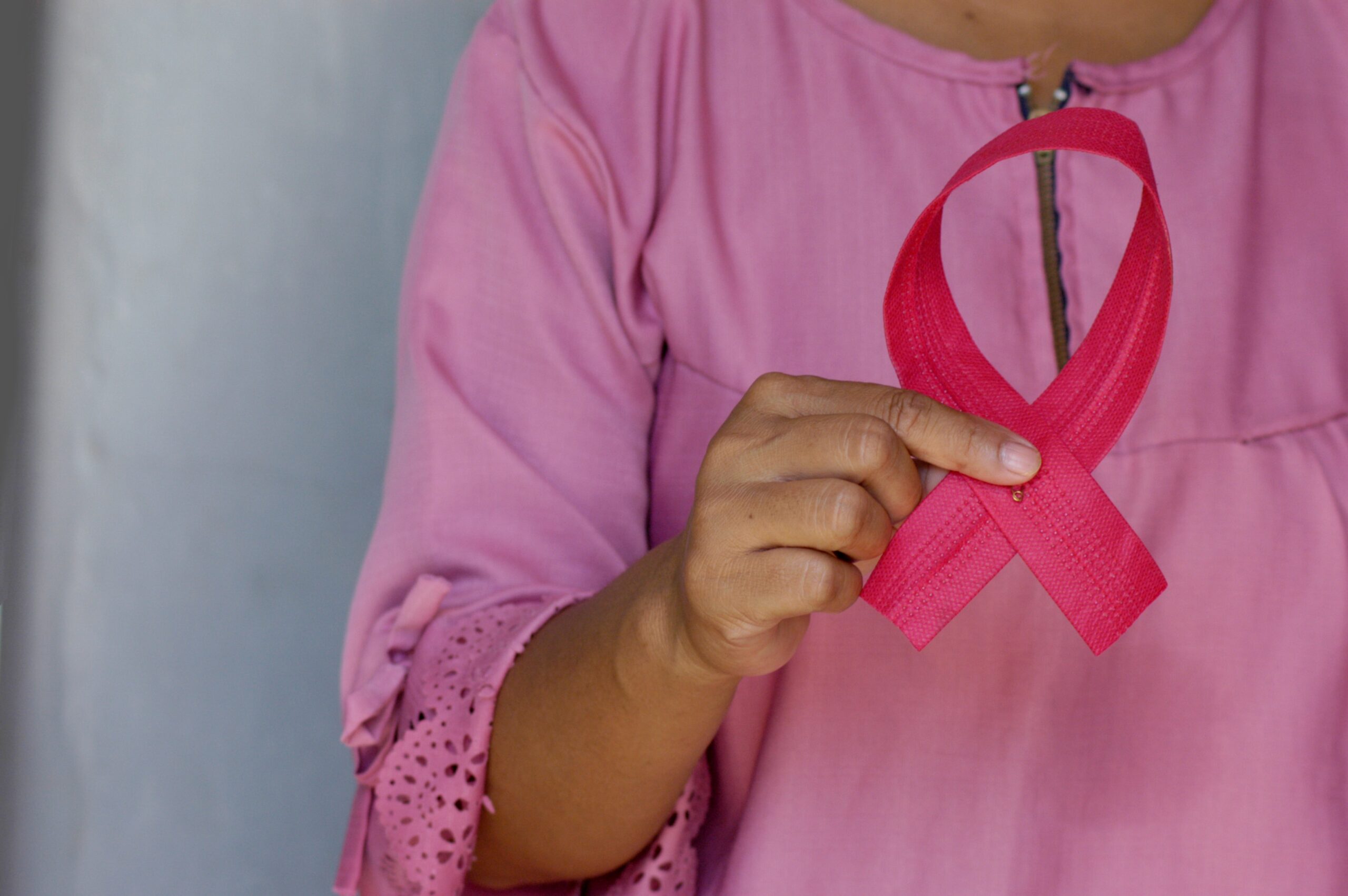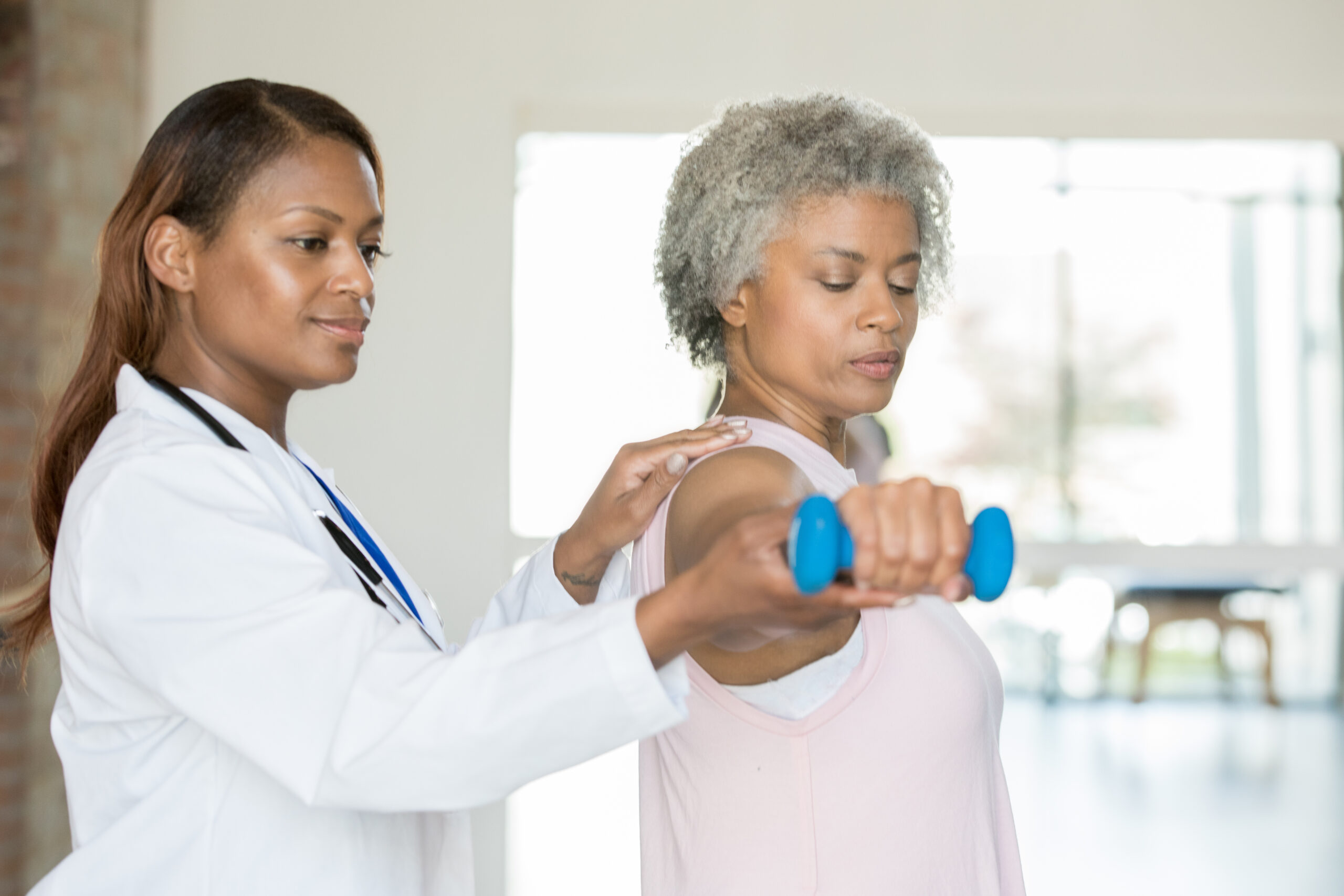Lymphedema
The lymphatic system is a part of the immune system and has many functions, such as protecting the body from illness, maintaining body fluid levels, absorbing fats, and waste removal. The lymphatic system consists of many parts. Lymph is a collection of the extra fluid that drains from cells and tissues. Lymph nodes are bean-shaped glands that monitor and cleanse the lymph as it filters through them. Lymphatic vessels are the network of microvessels and tubes that transport the lymph away from tissues. Collecting ducts return lymph back to the bloodstream. There are several other organs within the lymphatic system, such as the spleen, thymus, tonsils, bone marrow, Peyer’s patches, and the appendix.
Breast cancer cells can enter the blood and lymphatic system, then spread to the regional lymph nodes in the axilla (armpit) and other tissues throughout the body.
What is lymphedema?
Lymphedema occurs when lymph fluid accumulates in the interstitial tissue, causing swelling of the limb. It is a potential side effect from surgery and radiation typically affecting the treated side. When lymph nodes are removed (surgery) or damaged (radiation), a blockage in the lymphatic system occurs resulting in lymphedema. Please refer to the Surgery video for more information.
Lymphedema is a progressive disease and can be categorized in four stages:
Stage 0:
-subtle symptoms may be present: achiness, heaviness of the affected limb, fatigue
-no visible swelling
Stage 1:
-increase in girth
-heaviness and stiffness in the affected limb
-swelling may be relieved with elevation
Stage 2:
-increase in swelling
-hardness and increase in size of the involved area (tissue fibrosis)
Stage 3:
-severe dry, scaly, thickened skin
-blisters and (leaking of lymph fluid)
-debilitating
Signs and Symptoms:
Lymphedema typically occurs within 18 months of treatment but may occur at any point. The symptoms are very individual but characterized by limb heaviness, fatigue, fullness, tightness and thickening in the skin, pain, loss of range of motion and strength.
Symptom assessment/education/referrals:
Early detection and diagnosis are key. Stages 0 and 1 are reversible, however, stages 2 and 3 are less responsive to treatment. It is recommended that prior to cancer treatment, a trained lymphedema specialist performs limb measurements on both sides.
Lymphedema may increase psychological distress and risk of infections. Affected individuals should be educated in self-care management: infection prevention measures, risk reduction strategies, and maintenance of skin integrity.
Physical activity should be discussed with a lymphedema specialist, however, there is no evidence that physical activity is associated with exacerbation or development of lymphedema. For more information, please view our Exercise to Beat Cancer video.
Survivor lymphedema education includes self-management, referral to certified lymphedema therapist and referral to a physical therapist. For additional information, please visit Nebraska Medicine website https://www.nebraskamed.com/physical-occupational-therapy/lymphedema.
Risk Factors:
-Surgery or radiation
-Obesity
-Localized infection
-Increased number of removed lymph nodes
-More advanced cancer diagnosis
For more information on lymphedema, please review the National Comprehensive Cancer Network’s Guidelines for Patients https://www.nccn.org/patients/guidelines/content/PDF/survivorship-crl-patient.pdf.
Natale, G., Stouthandel, M. E. J., Van Hoof, T., & Bocci, G. (2021). The Lymphatic System in Breast Cancer: Anatomical and Molecular Approaches. Medicina (Kaunas, Lithuania), 57(11), 1272. https://doi.org/10.3390/medicina57111272

Your feedback is appreciated. Help us improve the site.
Submit your feedback here!

About Us
Learn more about the Beating Breast Cancer project.
